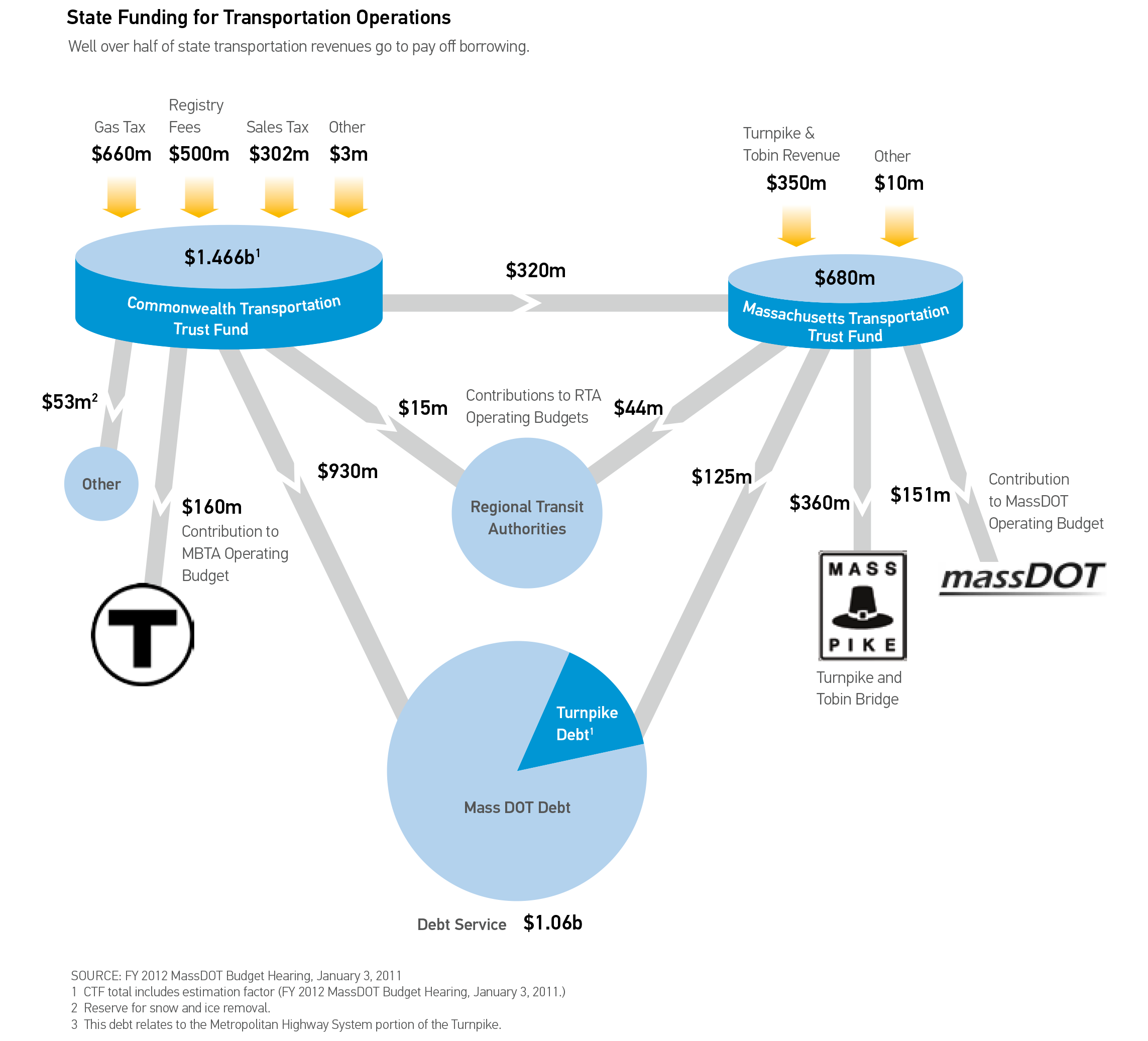
An Emergency Transportation Plan to Fix Boston's Transit Crisis
Yesterday we learned that due to decades of neglect the MBTA will need at least 30 days to restore service to the normal level of delays, signal problems and disabled trains we're used to. While there is plenty of blame to go around, right now we must focus on the current emergency.
Yesterday we learned that due to decades of neglect the MBTA will need at least 30 days to restore service to the normal level of delays, signal problems and disabled trains we're used to. While there is plenty of blame to go around, right now we must focus on the current emergency.
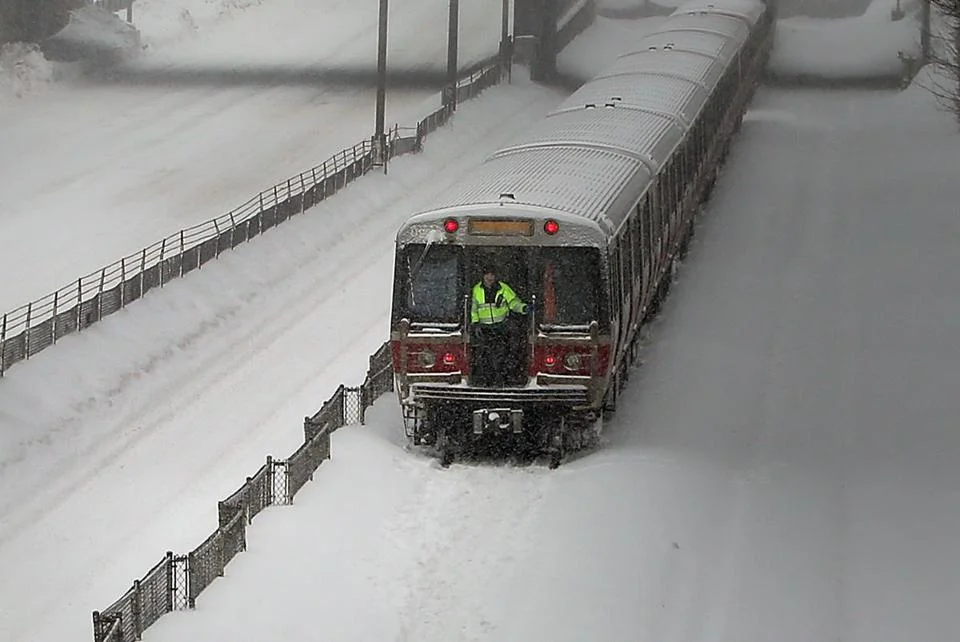
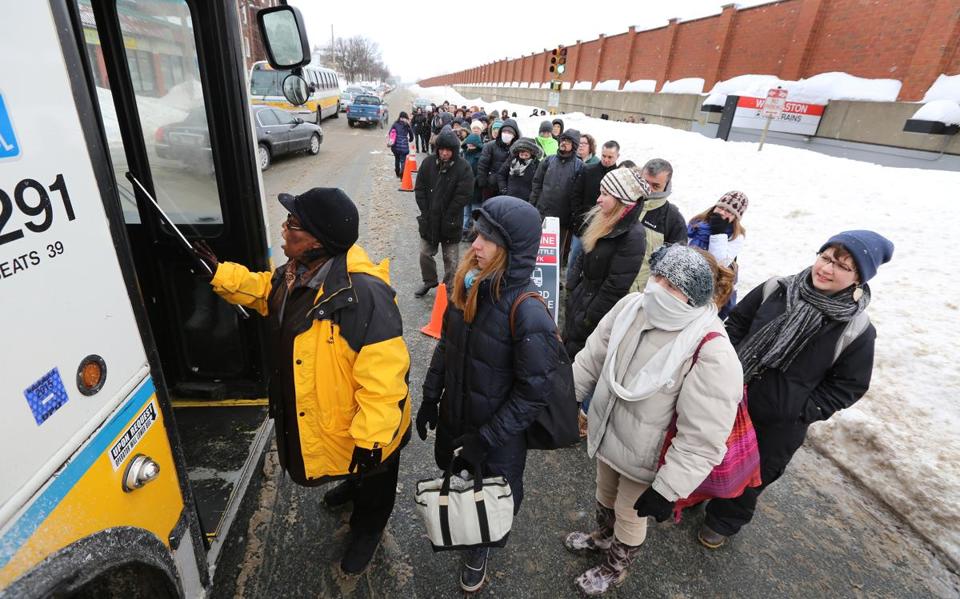

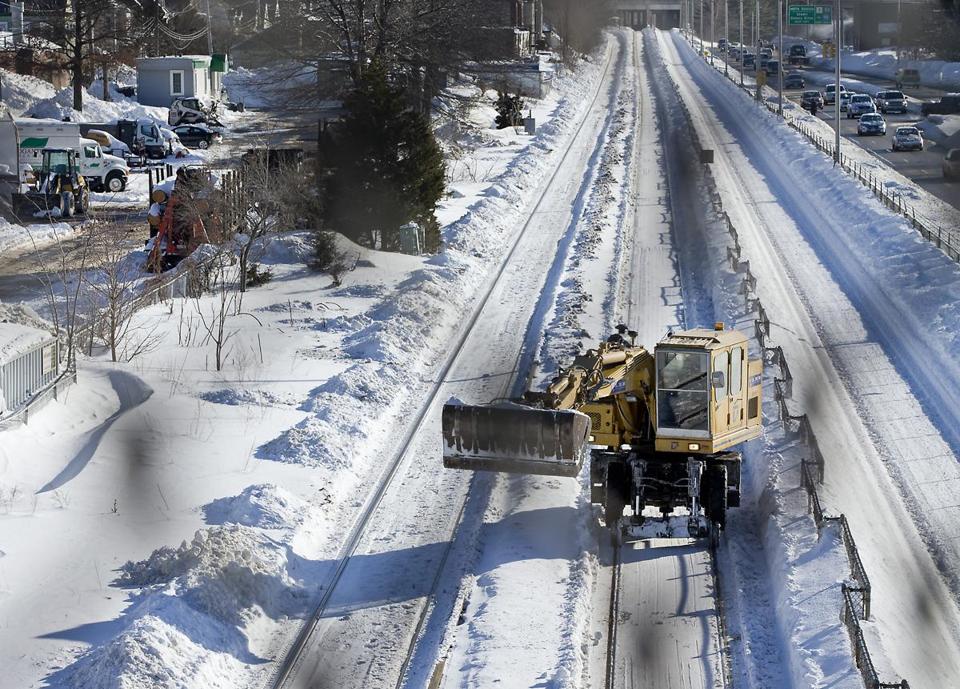
We must act quickly to implement a temporary transit network that would people to resume their lives before the state's economy collapses and half the city's population is out of work. Mayor Walsh and MBTA General Manager Beverly Scott should seek help from cities and transit agencies who have experience with natural disasters. With bold political leadership and around 1,000 buses from across the northeast we can put an emergency transportation plan into action.
For guidance we should look to MTA New York City Transit, which in 2012 implemented emergency "bus bridges" connecting Brooklyn and Manhattan two days after Hurricane Sandy knocked out all subway service in the city's core (photos). The city used simple cones to create dedicated bus lanes along the shuttle route and police officers to enforce the lanes and keep over 200 buses moving on each route. MTA also ran a long-term shuttle route to replace the A line in Queens and a year earlier replaced suspended commuter rail service after Hurricane Irene.
Here and now, a network of emergency shuttle bus routes must be created based roughly on known travel patterns. Bus routes would not exactly mimic subway corridors but they would get you into the city's core where you can walk or use what's left of the T. Some routes would use dedicated bus lanes and receive priority over all other traffic, with police enforcement, while other corridors would be open only to buses. For all of the issues with bus service, the MBTA does a great job running shuttle bus links such as Harvard-Alewife and Lechmere-North Station when things are planned in advance.
Cars carrying fewer than 3 occupants would be prohibited from entering the city or using major highways inside Route 128. Slug lanes would allow those who must drive from suburban areas to pickup additional passengers before continuing on. Large parking lots along I-495 and Route 128 can be turned into park-and-ride lots with bus shuttles operating in dedicated bus lanes on all major highways.
Bikes must be part of the solution. It is certainly cold outside but desperate times call for desperate measures. Better to ride 3 miles in the cold than wait for a bus in the cold for the same 15 minutes, and every 50 bikes represents one more bus available elsewhere. Designating corridors like Washington St, Massachusetts Ave, Huntington St and Commonwealth Ave for buses and bicycles only would enable reasonably fast limited-stop bus service while giving people people a safe place to ride. Secure bicycle parking tents can be setup in several downtown locations and an emergency ordinance could require most office buildings to allow bikes inside until full subway service resumes.
Walking should be encouraged whenever possible in order to minimize stress on the transit system. Bostonians have not experienced a transit strike in recent decades but experience from other cities shows people will gladly walk a few miles if they can. Currently our sidewalks are a treacherous mix of snow and ice, so vehicle lanes can be converted to pedestrian lanes until sidewalks are clear, with some key roads open to buses and pedestrians only.
Some of these measures may sound extreme, but desperate times call for desperate measures, and I believe even the harshest critics of transit would be surprised by how well the city would function if they would just allow a demonstration.
At the very least, this plan would prevent the total collapse of the region and it is our chance to show definitively that a fast, frequent and comprehensive transit network is invaluable to the entire region. Eventually we'll wonder how we ever lived without one.
Podcast 07b - Transit News
Part two of a marathon episode: featuring a roundup of the latest Boston transit news and analysis. There's no shortage of controversial happenings:
- Mattapan High Speed Line crash - operator failure to secure trolley; it rolled backwards (DotNews)
- Green Line D Branch flooded, portal closed during heavy rain (Boston Magazine)
- Will there be regular commuter rail service to Gillette Stadium in Foxboro? State buys freight rail lines that would make it possible. (BostInno)
- The fight for reliable Amtrak service: Amtrak being sued by big railroad companies over on-time metrics (EE News) (WaPo).
- Commuter rail operator Keolis hit with $804K penalties in second month as operator. (WBUR) Is this model working?
- Does the latest South Boston Waterfront Plan make progress in solving some of the area's transportation and land use challenges? Are the recommendations useful and realistic? Visit A Better City for the latest and follow this show for regular updates.
- Bridge closures: What function could a rebuilt Northern Ave Bridge serve? What is the future of services for at-risk adults following the sudden closure of the Long Island Bridge? (update)
- Former Transportation Secretary Jim Aloisi offers three "visionary" proposals that may not really be all that visionary. But they're not new and we're not impressed. We think there are more useful, realistic and equitable transit investments we could be making.
- Paris prohibits "unnecessary traffic" from city center, with service vehicles and residents' cars excepted (Grist)
Did we miss something or get it wrong? Send us your questions, comments and ideas for topics or guests >> contact us. Or share your thoughts in the comments below.
The Transit Matters Podcast is your source for transportation news, analysis, interviews and more. We focus on sustainable transportation planning, operations and policies in Boston and beyond. Transit Matters is a joint project of local transit enthusiasts Marc Ebuña, Jeremy Mendelson and Josh Fairchild.
Like this project? Share it around, tell your friends and colleagues, and subscribe to the RSS feed (iTunes) to be notified of new posts and episodes.
Has MassDOT Reached the End of the Road for Internal Reform?
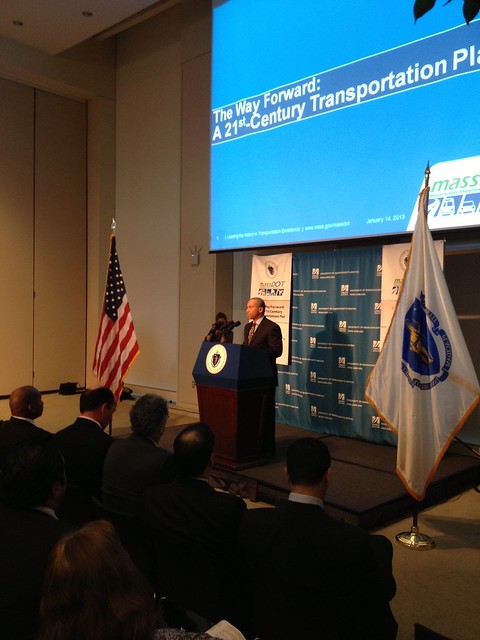 Two Fridays ago, Governor Deval Patrick stated that he would unveil a proposal later this month to raise the necessary money through taxes or fees to fix the financially beleaguered transport network. Today, the details of where the money would be coming from and how much were revealed by the Governor and MassDOT.
Two Fridays ago, Governor Deval Patrick stated that he would unveil a proposal later this month to raise the necessary money through taxes or fees to fix the financially beleaguered transport network. Today, the details of where the money would be coming from and how much were revealed by the Governor and MassDOT.
The original Globe article on the issue highlighted that the annual gap between actual needs and what is actually raised and spent amounts to nearly $1 billion annually. This comes even after many years of reform that have consolidated a number of state agencies under MassDOT and produced efficiencies that have saved the state countless hundreds of millions of dollars over the years.
As temperatures dip far below freezing once again, it becomes painfully clear to many commuters that our aging transit system is in dire need of investment that no amount of structural reform will provide. MBCR spokesman Scott Farmelant notes, 'There is only one way to prevent cold-weather delays: increased capital investment into the infrastructure, in particular signals, switches, and bridges.'
Likewise, there are many transit, commuter, and even high speed rail agencies that operate in similar climates in Europe that have overcome[PDF] sub-zero temperatures. By investing in weather-resistant infrastructure that is engineered to anticipate winter conditions and maintaining a modern fleet of trains, service impacts remain low. Sometimes, even the older equipment gets pulled out to help battle snow, much less extreme cold conditions, as happened in Sweden in 2010.
That said, it's no wonder the MBTA encounters such severe weather-related issues, even without snow. No amount of consolidation or reorganisation of the MBTA or MassDOT can generate the amount of money to buy new signals, trains, or track needed to even prevent equipment-related delays on a sunny spring day. It's time to make the hard decisions and start raising new revenue or increasing the amount that comes from existing revenue sources.
New revenues in the short term can come from a new vehicle miles travelled tax, congestion pricing, and new road tolls. Unfortunately, America's road users are conditioned to object to paying for any road maintenance out of pockets and with good reason. For decades, the expectation has been that income taxes and the gas tax alone was enough to maintain the growing glut of roads we've built out:
If you actually make people pay out of pocket to get a faster trip, people aren’t willing to spend that much. We have two bridges across Lake Washington. One has to be replaced. They put a toll on it to help pay for the project, and immediately traffic plummeted. People are driving around to get to other side, driving on the other road, sitting through congestion, timing their trips differently in order to avoid tolls. People really, if they have to pay out of pocket for a quicker trip, they don’t place much value on it.
So we’re expecting taxpayers to foot the bill for things the drivers themselves will not pay for.
With that in mind, why shouldn't transit riders also be made to pay more out of pocket for transit improvements? The truth is that we, as a state and a nation, have been subsidising roads more than transit by a large margin for decades and those public investments have done little to provide effective core services. In fact, T riders pay more in fares ($451 million in 2011) to run the T than drivers pay in tolls across the Tobin Bridge and entire Turnpike ($350 million in 2011) to pay for a much larger and more expensive system.
Taking the long view, it cannot be said enough that MassDOT and the MBTA can better capitalise on their existing properties by developing on them instead of selling them outright. Selling property and air rights is one way to gain revenue but is not a viable long-term solution.
Property is the most valuable asset of any railroad and Japan's railroads have known this for years. Build homes and businesses in a walkable pattern around your stations and your network and its destinations become that much more accessible. In the long run, you have a steady stream of income from property rentals and fares from riders who depend on your system. Somerville's Assembly Square mega-project is the best example of this type of destination-creating redevelopment that is fuelled by transit. My only issue with the project is the alarming 7,500 parking spaces that will be constructed for such a walkable development adjacent a new $57 million Orange Line station.

Furthermore, building more transit-oriented development and strengthening those neighbourhoods has the potential to address the growing demand for market-priced units and outstanding need for affordable housing. The impact of new user fees on the impoverished who need to drive to work is an unfortunate reality. This can only be mitigated by providing quality, transit-accessible neighbourhoods with good access to affordable housing, jobs matched to the skills of those residents, and quality schools that provide them and their children access to upward social mobility. As more opportunities arise for people to live in areas better able to serve transit, the case for outward growth and maintenance of far-reaching transit routes declines as the case for road-based user fees increases politically.
Value capture taxes are also another way to revenue from development around stations. In addition to adding value to our existing transit system, new developments bring higher property values. Value capture capitalises on this rise in property values by enforcing fees or taxes on developers or landowners in the area of redevelopment and can go right back into maintaining the very infrastructure that serves that neighbourhood.
Ultimately, it's long-term, smart growth strategies championed by MAPC and MassDOT's mode shift initiative that will limit the amount of new infrastructure that we'll have to borrow to spend and maintain. They will also allow us to derive more value from the infrastructure we've already built and are currently paying for. New road construction cannot continue to be used as an argument for continued debt spending under the prospect of economic development when our crumbling core infrastructure is inhibiting in-place economic growth.
In the short term, there are several ways the state can improve the sorry state of affairs with transportation funding, but most involve making tough decisions about new taxes or fees. Even less can be done in the near term to reduce the need for additional spending to maintain our crumbling infrastructure.
Categories
- Children (1)
- Diversions (1)
- Olympics (1)
- MAPC (2)
- Red–Blue Connector (2)
- Urban Design (3)
- Bus (4)
- Fares (4)
- Late Night Service (4)
- MBTA ROC (4)
- Silver Line (4)
- Snow (5)
- Blue Line (8)
- Emergency (8)
- Orange Line (8)
- Public Comment (8)
- Maintenance (9)
- Operations (9)
- Signage (9)
- Fare Collection (10)
- Labs (11)
- Safety (11)
- Planning (12)
- Communication (14)
- MBCR (14)
- MassDOT (14)
- Green Line (16)
- History & Culture (16)
- Red Line (18)
- MBTA Bus (21)
- Commuter Rail (24)
- Advocacy (26)
- Capital Construction (28)
- Politics (30)
- Podcast (35)
- News (38)
- Media (40)
- Funding (42)
- Statements (50)
- MBTA (57)


